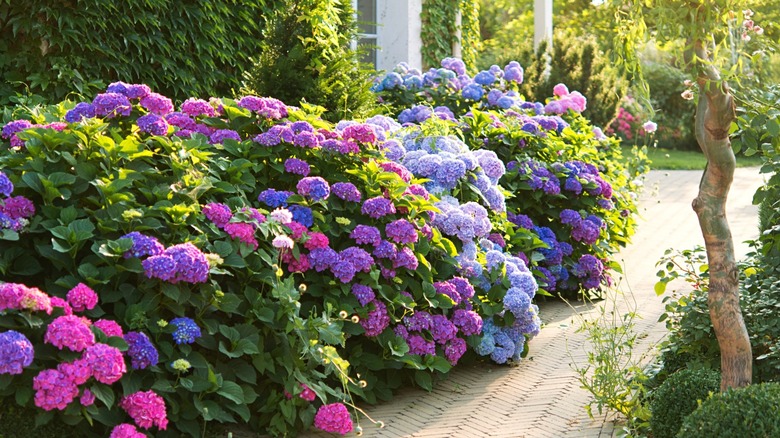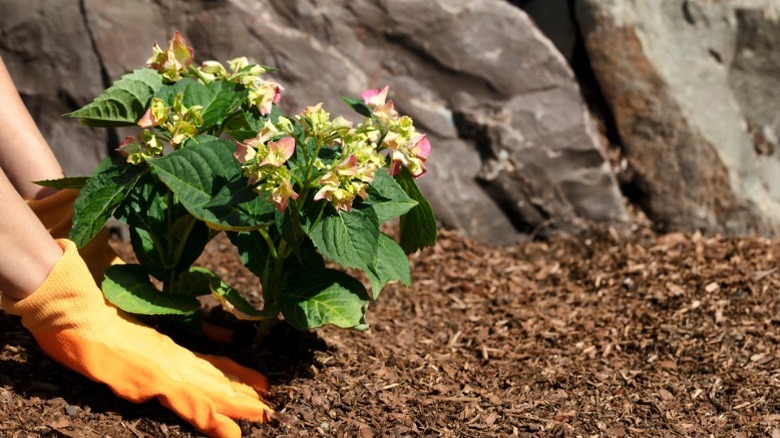Keep Hydrangeas Healthy With A Simple Garden Task This Fall
Big, bold, and impossible to ignore, hydrangeas (Hydrangea spp.) turn any garden into a show-stopping display each summer. But those flowers won't reliably return on their own without some attention first. As fall settles in, you need to protect your hydrangeas during cooler weather. Their roots are sensitive to sudden changes in temperature, and if they freeze or dry out, the plant will struggle to bounce back. The best way to protect them is simple: add mulch before the ground freezes.
A layer of mulch works like insulation for the root zone. It keeps the soil evenly cool once winter sets in, reduces the stress that comes from freeze-thaw cycles, and holds in moisture during months when rainfall is limited. That stability is what helps hydrangeas make it through dormancy, strong and ready to burst into color when the warm season returns. The timing matters, though. Spread mulch in fall after the first frost but before the soil fully hardens, so it can lock in the right conditions and carry the shrubs through winter without damage. Avoiding common mulching mistakes in your garden will pay off in the long run.
Hydrangeas have a long history in gardens, tracing back to native habitats in Asia and North America. These woody, deciduous shrubs grow in rounded forms with coarse, green foliage and large flower clusters, which may be purple, white, blue, or pink depending on soil pH. Their versatility makes them popular across landscapes: from hedges and borders to cottage gardens and pollinator beds. With just a little care in the fall, they reward you with a spectacular summer display.
Mulching hydrangeas in your yard
Mulching hydrangeas, which perform well in USDA zones 3 through 9, isn't complicated — but doing it the right way makes all the difference. Lay down a 2- to 3-inch blanket of organic mulch, like pine straw, bark chips, or leaves, over the roots. Keep the mulch pulled a few inches back from the base of the stems so moisture doesn't collect there and invite rot. The goal is to blanket the soil evenly, creating a buffer that shields the roots from temperature swings and helps the shrub hold onto water throughout the winter.
Different soils and regions call for small adjustments. In heavy clay soils, mixing compost into the mulch improves drainage, so roots don't sit in waterlogged ground. For sandy soils, lean on mulch that's rich in organic matter, such as shredded leaves, to keep the soil from drying out too quickly. Gardeners in colder regions benefit from adding a thicker layer once the ground freezes — around 6 inches of mulch. Once spring buds begin to swell, thin the mulch to let the soil warm gradually. For container-grown hydrangeas, top the soil with straw or leaves and move the pots into a sheltered spot, like inside a garage or against a protected wall, to buffer them from cold winds.
One word of caution: avoid mulching too early in mild zones, since warm soil under heavy mulch can encourage rot, disease, or provide a hiding place for rodents. Also, don't pile it directly against the stems, which creates another risk of disease. Done properly, mulching delivers multiple benefits with very little effort. A few minutes of prep this fall means lush, colorful hydrangeas greeting you next summer. Pair them next to other vibrant flowers for a thriving garden.

